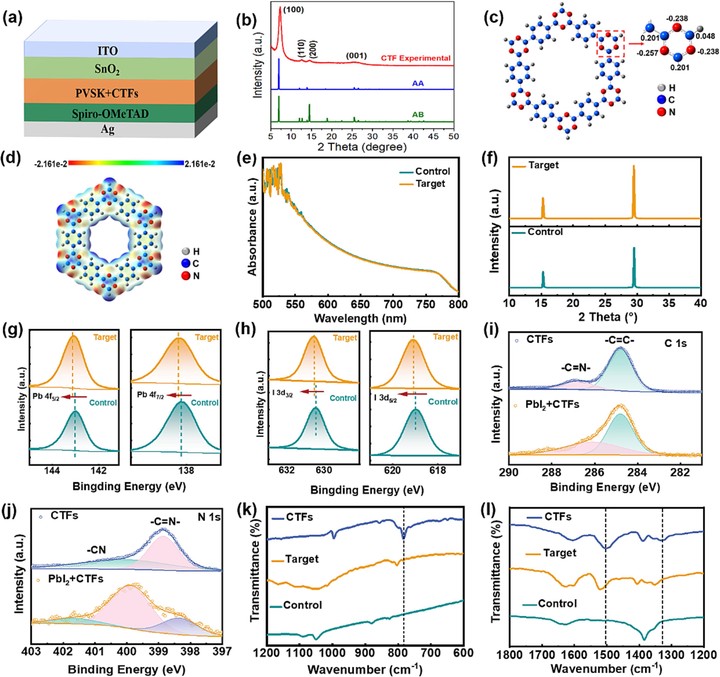Covalent triazine reducing the defects by coordination roles and inhibiting I− migration by anion-π interaction for efficient perovskite solar cell

Abstract
The grain boundary defects related non-radiative recombination, I− migration, and lead leakage problems are the foundational and fundamental aspects for the perovskite solar cells. Herein, covalent triazine frameworks (CTFs) are introduced into the perovskite film to address these problems. CTFs can passivate the uncoordinated Pb2+ defects at grain boundary and reduce the lead leakage based on the coordination interaction between nitrogen atoms in triazine ring and Pb2+. CTFs can also inhibit the I− migration and reduce the I− vacancy defects based on the anion-π interaction between electron-deficient triazine ring and I−. Benefited from the passivated grain boundary defects and inhibited I− migration by CTFs, the modified target device achieves a power conversion efficiency of 23.05 % with improved humidity stability and thermal stability. Therefore, this work lays the foundation for obtaining effective, stable, and environmentally friendly perovskite solar cells.